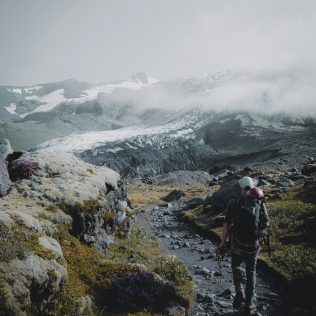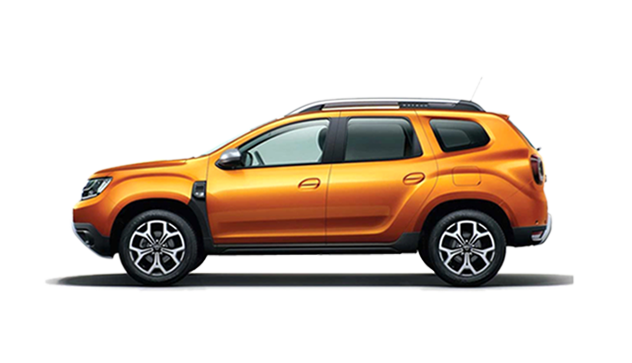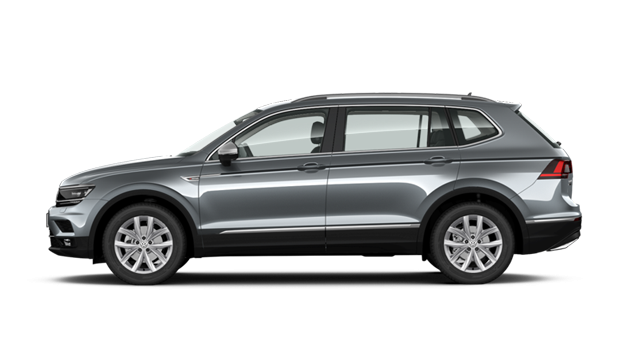Iceland is known the world over for its dramatic terrain and stunning scenery, from black sand beaches to rainbow-hued mountain ranges and sparkling lagoons. What better way to explore then than with your own two feet?
Popular for multi-day treks, day hikes, and even guided hiking tours, Iceland is one of the best destinations in Europe for exploring on foot.
Read on to discover the best time to hike, what to pack, how to get around, and more. This is your ultimate guide to hiking in Iceland.
When Is the Best Time to Go Hiking in Iceland?
Because Iceland’s weather can be highly variable with freak snowstorms, high winds, and heavy rain, the hiking season is fairly short.
The best time to go hiking in Iceland is in the summer months, from June to August. You’ll have less of a chance of precipitation and warmer temperatures, making hikes more comfortable. Summer additionally offers long daylight hours meaning that you can hike into the late evening or early in the morning.
There are also more trails available to hike, including the country’s interior highlands and the Westfjords, as the snow and ice has melted.
Shoulder seasons like late spring and early autumn can also be good for hiking, although you’ll need to check weather and trail reports before heading out. It’s also a good idea to bring along a rescue beacon in case the weather turns at the last second.
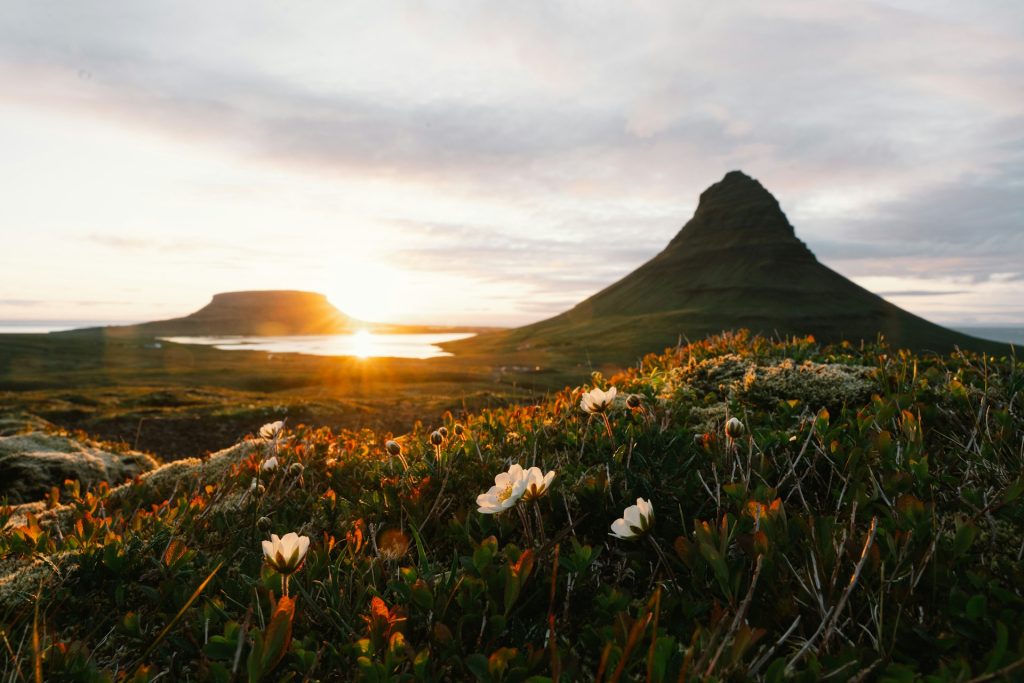
What to Pack for Hiking in Iceland (Day or Multi-Day Treks)
Iceland is one of those destinations that requires a fair amount of gear to stay comfortable while hiking. Whether you’re doing a day hike or multi-day trek, here’s a definitive list of what to bring when hiking in Iceland.
Water bottle
Hydration is important, despite the fact that Iceland doesn’t have high temperatures or altitudes.
Hiking boots
The one piece of gear you can’t skimp on for hiking in Iceland is a sturdy pair of hiking boots. Even better if they’re waterproof.
Warm clothes
Iceland’s variable weather patterns means you’ll need to pack rain gear and thermal layers. Layering is the name of the game to keep your body temperature properly regulated.
Wool socks
With proper shoes also comes the need for proper socks. Wool socks are great for moisture wicking and keeping your feet dry.
Dry bags
Keeping your gear dry is important in a destination with frequent rain. Bring along a dry bag to keep all of your items waterproof.
Lightweight backpack
The foundation of your hiking gear should be a well made, lightweight backpack to put all of your gear in.
Sunscreen
It’s important to bring sunscreen along to protect your face and arms from the arctic sun, especially in summer.
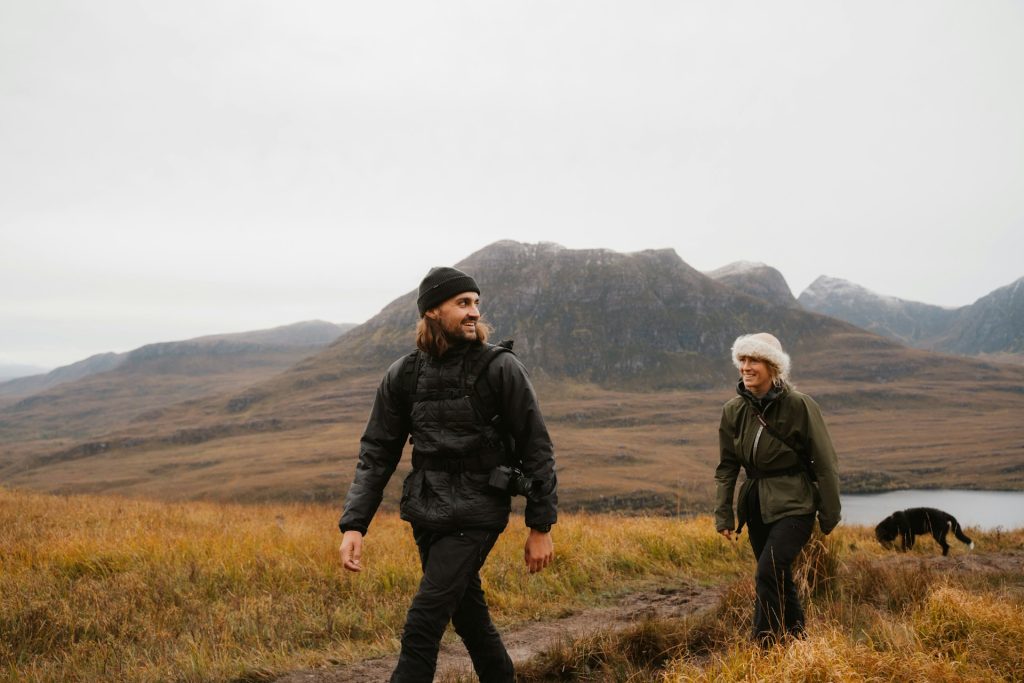
Hiking Styles: Day Hikes vs. Multi-Day Treks in Iceland
Iceland has a wide variety of hiking options, from day hikes to multi-day treks. Different hiking trails will appeal to different styles of travelers. Do you want to spend most of your trip hiking or would you rather take part in a wide variety of experiences that includes shorter hikes?
Some areas are particularly known for their multi-day treks, like Laugavegur, which is often touted as the most popular long-distance hiking trail in Iceland. More casual hikers will love the option to do short treks like Svartifoss Trail in Skaftfell, just 2.1 miles in length but offering beautiful views of the Svartifoss waterfall.
You’ll want to plan your hikes according to your fitness level. Look to see how much elevation gain and how long certain trails are before heading out. There are plenty of trails across Iceland that are suited for both beginners and experts.
5 Top Hiking Trails in Iceland by Region
Whether you’re after a scenic short walk or a multi-day wilderness adventure, Iceland has hiking trails for every type of traveler. Below are some of the most popular and iconic hikes, organized by region — all accessible by car and well worth the effort.
Laugavegur Trail (Highlands)
Distance: 55 km (34 mi) • Duration: 3–4 days • Difficulty: Challenging
The Laugavegur Trail is Iceland’s most famous long-distance hiking route — and for good reason. This multi-day trek starts in the colorful rhyolite mountains of Landmannalaugar and finishes in the lush valley of Þórsmörk, taking you through a surreal mix of hot springs, glaciers, volcanic deserts, and black sand plains.
Expect river crossings, elevation gain, and unpredictable weather, so proper gear and preparation are key. Open only during the summer months, this trail is best done between late June and early September, and is supported by mountain huts and campsites along the way.
🔧 Tip from locals: You’ll need a 4×4 vehicle to reach Landmannalaugar. Firefly offers affordable 4WD options perfect for tackling F-roads safely.
Reykjadalur Hot Spring Hike (South Iceland)
Distance: 7 km (4.3 mi) roundtrip • Duration: 2–3 hours • Difficulty: Easy–Moderate
Only about 45 minutes from Reykjavík, this popular day hike leads you into Reykjadalur, or “Steam Valley,” where you’ll find natural hot springs running through a grassy canyon. The trail is mostly uphill but manageable, with incredible views of geothermal steam vents and wild Icelandic landscapes.
Your reward? A soak in a warm river surrounded by mountains. Best done in the summer months, but accessible in spring and early fall too.
Glymur Waterfall Trail (West Iceland)
Distance: 7 km (4.3 mi) roundtrip • Duration: 3–4 hours • Difficulty: Moderate–Challenging
As Iceland’s second-tallest waterfall (198 meters!), Glymur is both stunning and adventurous. The trail includes a river crossing over a log, a narrow cave tunnel, and some steep elevation gain with cables to assist in trickier spots.
The hike is only accessible in summer due to unpredictable weather and slippery conditions in other seasons. You’ll want sturdy boots — and maybe a change of socks!
Svartifoss Trail, Skaftafell (Southeast Iceland)
Distance: 3.5 km (2.1 mi) roundtrip • Duration: 1–1.5 hours • Difficulty: Easy
Located in Vatnajökull National Park, this short and family-friendly hike leads to Svartifoss, a gorgeous waterfall framed by dark basalt columns. The paved trail has a steady incline but is well-maintained and suitable for most fitness levels.
You can reach Skaftafell with a 2WD rental car in summer, and it’s a great pit stop on a Ring Road road trip.
Mount Esja (Capital Region)
Distance: Varies (3–6 km roundtrip depending on route) • Duration: 1.5–3 hours • Difficulty: Moderate–Challenging
Just 30 minutes from downtown Reykjavík, Mount Esja is the city’s favorite backyard hike. The well-marked trail offers multiple routes depending on your fitness level. Most hikers aim for the “Steinn” viewpoint, which offers panoramic views over the capital and Faxaflói Bay.
Expect a steady climb and some rocky sections, but no technical gear required. Popular year-round, though best enjoyed on clear days when the view really shines.
Do You Need a Guided Hiking Tour in Iceland?
If this is your first time hiking in Iceland or you’d like to go on an adventure in a more remote area, it might be a good idea to opt for a guided hiking experience.
A local will lead you through incredible landscapes, like Landmannalaugar or Hornstrandir, taking the pressure off finding your way and teaching you about the area, too.
Double check the credentials of the group tour you’re going with ahead of time to ensure your safety. You’ll want to look at their licenses, reviews, and safety record.
It’s also a good idea to review our own Iceland hiking safety guide for further information!
Mountain Huts and Camping: Where to Stay While Hiking
Like many other European countries, Iceland is home to mountain huts which are the perfect respite for multi-day treks or a good stopping point on day-long hiking trips.
Found in locations across Iceland like the Laugavegur Trail and Hornstrandir, mountain huts are most popular in the remote highlands where modern conveniences are hard to come by.
If you’re planning to stay the night in these huts, it’s best to book in advance and plan early. Iceland’s mountain huts completely sell out in summer, and often months ahead of time. In general, camping is allowed near mountain huts which allows for added convenience of using their facilities, like toilets and running water, usually for a small fee.
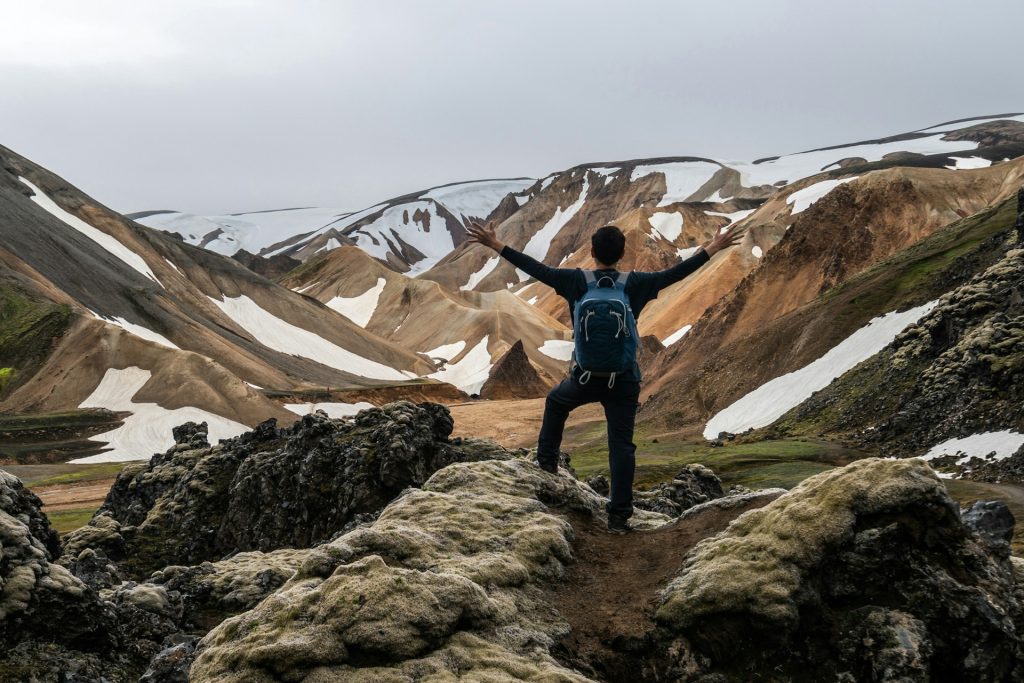
Getting to the Trail: Best Rental Cars for Iceland Hiking Adventures
One of the best things about hiking in Iceland? You can reach most trails with a rental car — no complicated public transport or tight tour schedules. Having your own car means you can set off early, stay late, or chase a break in the weather when it matters most.
2WD vs 4×4: What Do You Really Need?
- For easy-access trails like Svartifoss, Mount Esja, or Reykjadalur, a 2WD rental car is more than enough. These are well-maintained roads and close to towns or main routes like the Ring Road.
- But if you’re eyeing highland hikes — like the Laugavegur Trail starting in Landmannalaugar or routes in Kerlingarfjöll — you’ll absolutely need a 4×4 vehicle. These areas require driving on Iceland’s rugged F-roads, which often include potholes, steep hills, and even river crossings.
🔧 Please note: Icelandic F-roads are only open during the summer months, and they’re off-limits to most 2WD cars by law. Always check road conditions before heading out!
Why Firefly Is a Smart Choice for Hikers
Firefly Iceland offers some of the cheapest 4WD and 2WD car rentals in the country — perfect for hikers on a budget. Even better? We have a fleet of older model vehicles in great shape, so you’re not paying premium prices for a car that’s just going to get dusty on the trail.
Optional extras like GPS, roof boxes, and extra insurance for gravel protection are all available — and especially helpful for self-drive hiking trips.
Suggested Rental Cars for Hikers
- Dacia Duster 4×4 – Great for accessing highland trailheads like Landmannalaugar
- Toyota Aygo or similar (2WD) – Perfect for shorter hikes close to Reykjavík or along the south coast
- Kia Sportage 4×4 – A comfy upgrade with plenty of space for gear
Extra Tips for a Safe and Enjoyable Hiking Trip
Hiking in Iceland isn’t as straightforward as other destinations. You’ll need to check the local weather forecast and road conditions before heading out.
Be sure to share your hiking plans with someone ahead of time and always dress in layers as the Icelandic weather is often unpredictable. You might feel warm and toasty one minute and be freezing the next.
It’s a good idea to carry a paper map with you as you can’t rely on phone service in Iceland, especially in remote areas like the highlands.
One of the most important tips for hiking in Iceland is being respectful of nature and being sure to stay on marked trails. The flora in Iceland is extremely fragile and tourism has already contributed to degredation of plant life in several areas.
Plan Your Hiking Trip by Region or Season
If you’re still in the planning phase of your hiking trip to Iceland, check out some of our other guides including the best hikes in Iceland, best hiking canyons in Iceland, and hiking safety in Iceland.
Keep watching our website to see future guides like the best free hiking trails in Iceland in autumn and the top short hikes with a view near Reykjavik.
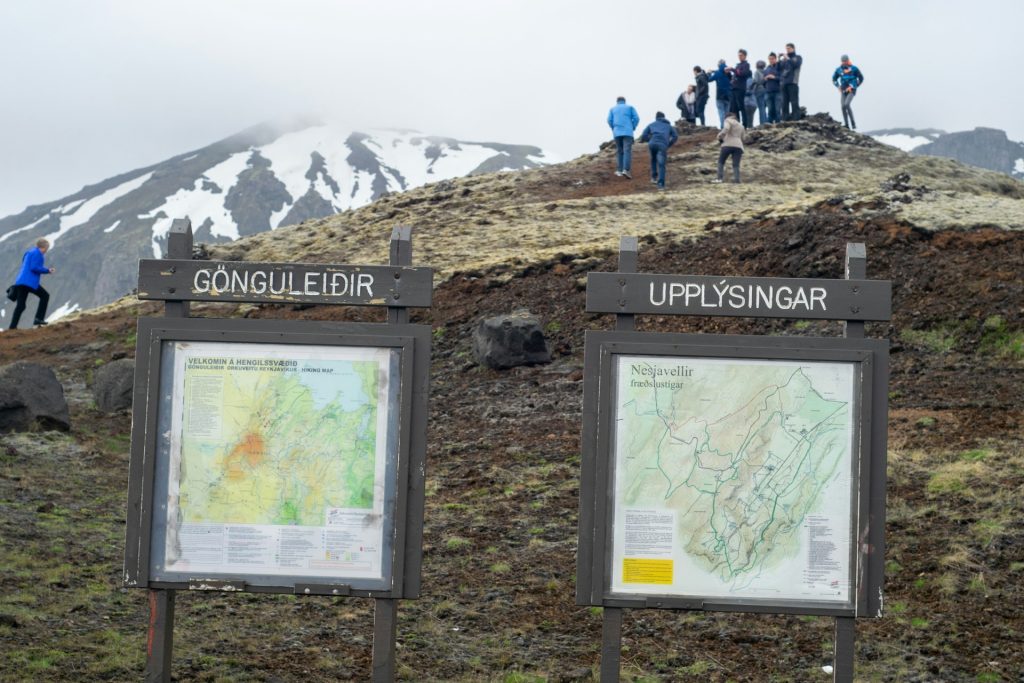
Frequently Asked Questions About Hiking in Iceland
1. Can you hike in Iceland in winter?
You can hike in Iceland during winter, but your options are very limited. Most mountain trails are closed due to snow and icy conditions. However, you can still enjoy short, low-elevation walks near Reykjavík or along the coast — just check the weather and wear proper winter gear.
2. What is the best month to go hiking in Iceland?
The best time to hike in Iceland is from late June to early September. During these summer months, you’ll have mild weather, long daylight hours, and most trails — even in the highlands — will be open.
3. Do you need a guide for hiking in Iceland?
Not always. Many popular trails, like Reykjadalur or Mount Esja, can be done on your own. But for multi-day hikes like the Laugavegur Trail or anything in the highlands, a guided hiking tour is a good idea — especially if you’re not experienced with river crossings or changing weather.
4. Are there free hiking trails in Iceland?
Yes! Most hiking trails in Iceland are completely free to access, including famous ones like Svartifoss, Glymur, and many coastal hikes. Just make sure to stay on marked paths and leave no trace.
5. How difficult are Iceland’s hiking trails?
Difficulty levels vary. Some hikes are short and easy, perfect for beginners or families. Others, like Glymur or Thórsmörk, can involve elevation gain, rough terrain, or slippery paths. Always check the distance and difficulty before heading out.
6. Do I need a 4×4 rental car for hiking in Iceland?
You’ll need a 4WD rental if you’re heading into the highlands or planning to start a trek from remote locations like Landmannalaugar. For hikes near towns or on paved roads, a 2WD rental car is usually enough.
Start Your Hiking Adventure with Firefly Iceland
Whether it’s your very first day hike or you’re headed out on a multi-day adventure, Iceland is waiting with open arms.
Make getting to the trail easy as pie by booking a cheap, reliable rental car with Firefly Iceland! Explore our hiking-friendly rental cars and you’ll be hitting the trail with confidence in no time!
